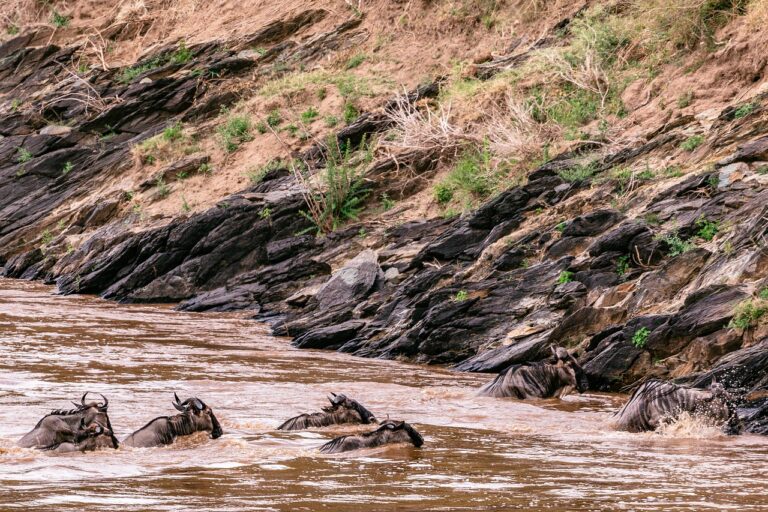Located on the border between Kenya and Tanzania, Lake Jipe is a stunning and ecologically important body of water. It is fed by the Lumi River, which flows down from Mount Kilimanjaro, and is home to some endemic fish species, as well as a variety of water birds and other wildlife. The lake and its surrounding areas are also an important source of livelihood for the local communities that depend on it for fishing, agriculture, and animal husbandry. In this article, we will explore the natural environment, wildlife, and communities of Lake Jipe, as well as offer suggestions for visiting this beautiful and unique destination.
Geography and Natural Environment
Lake Jipe is a shallow backwater of the Lumi River, which becomes the Ruvu River after flowing out of the lake. It covers an area of roughly 30 square kilometers and measures approximately 12 miles long by 3-4 miles wide. The lake is located on the leeward side of the North Pare Mountains, providing its main water source. The B1 Highway from the village of Kifaru in Tanzania provides access to the lake from the south.
The landscape around Lake Jipe is diverse, with the mountains of Ugweno rising to heights of 6,000-7,000 feet on the southern bank, while the opposite shore is a flat plain that is only slightly elevated above the lake. From the lake, it is possible to see the Kibo Peak of Mount Kilimanjaro in the distance. The shallow depth of the lake and the lack of a current (as the river that flows in turns around and flows out again) make it a unique and important ecosystem. The lake is also home to the Jipe tilapia, an endemic fish species that suggests a long period of isolation from other wetlands.
The natural environment of Lake Jipe is a vital part of its beauty and ecological importance. The diverse landscape, including the North Pare Mountains and the lake’s shallow depth, creates a unique habitat that supports a wide variety of plant and animal life. It is important to protect and preserve this environment to maintain the beauty and ecological balance of the lake.
Wildlife and Biodiversity
Lake Jipe is home to a wide variety of water birds, including storks, egrets, pelicans, spur-winged plovers, ducks, and Egyptian geese. Lesser jacanas and African swamphens are common on the lake, and Madagascar squacco herons, black herons, African darters, and African skimmers are often seen in the area. The lake’s reedy shores and wetland plants provide important habitats for these and other species.
In addition to the water birds, Lake Jipe is also home to several other animals. Hippopotami and Nile crocodiles are plentiful in the lake and its surroundings, and herds of game are often seen in the vicinity. While these animals can be dangerous to humans, they are also important to the lake’s ecosystem and should be respected and protected.
Local Communities and Their Relationship with the Lake
The local communities around Lake Jipe are an important part of the lake’s ecosystem and play a vital role in its conservation. These communities depend on the lake for their livelihoods, primarily through fishing, agriculture, and animal husbandry. The lake is also an important water source for irrigation of the surrounding farmlands.
The area around Lake Jipe is culturally diverse, with the Bantu half of the population speaking Ki-taveta and the Maasai language spoken by the remainder. The dialect of the northernmost area of the Pare Mountains, known as Ugweno, is Ki-gweno. The lake and its surrounding areas are an important part of the local culture and way of life.
When visiting the area, it is important to respect the local communities and their relationship with the lake. Visitors should follow any rules or regulations that may be in place to protect the lake and its ecosystem and should be mindful of the impact their actions may have on the local community. By supporting and collaborating with these communities, we can help to protect and preserve the beauty and ecological importance of Lake Jipe.
Visiting Lake Jipe
Lake Jipe is an accessible and beautiful destination for travelers interested in exploring the natural beauty of Kenya and Tanzania. To visit Lake Jipe, travelers can take the B1 Highway from the village of Kifaru in Tanzania. Once at the lake, there are several activities to enjoy. Birdwatching is a popular pastime, as the lake is home to a wide variety of water birds. Fishing is also possible in the lake, although the Jipe tilapia and other fish species should be caught and released to protect the lake’s ecosystem. Exploring the surrounding countryside, including the North Pare Mountains and the villages around the lake, can also be a rewarding experience.
It is important to take certain precautions when visiting Lake Jipe. The hippopotami and Nile crocodiles that inhabit the lake can be dangerous to humans, and keeping a safe distance from these animals is advisable. It is also important to respect the local communities and their way of life and to follow any rules or regulations that may be in place to protect the lake and its ecosystem.
Conclusion
In conclusion, Lake Jipe is a unique and beautiful destination worth exploring. Located on the border between Kenya and Tanzania, it is an important ecosystem home to various fish, water birds, and other wildlife. It is also an important source of livelihood for the local communities that depend on it for fishing, agriculture, and animal husbandry. The lake and surrounding areas are a vital part of the local culture and way of life.
Visitors to Lake Jipe can enjoy various activities, including birdwatching, fishing, and exploring the surrounding countryside. It is important to take precautions when visiting the lake, such as respecting the local communities and their relationship with the lake and avoiding contact with the hippopotamus and Nile crocodiles that inhabit the area. Protecting and preserving Lake Jipe ensures that this beautiful and ecologically important destination remains a treasure for generations to come.







